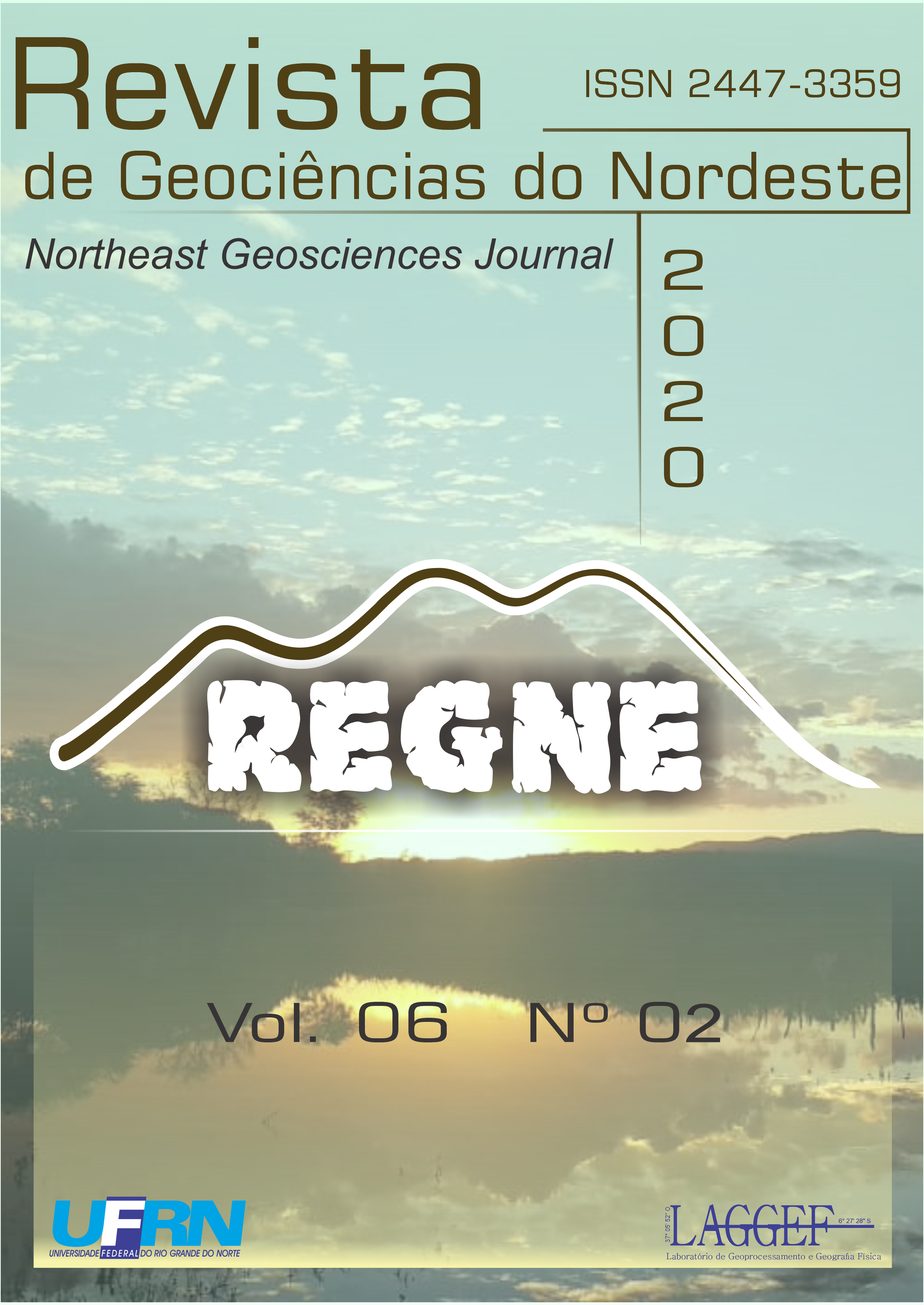ANÁLISE DA VULNERABILIDADE NATURAL À CONTAMINAÇÃO DA ÁGUA SUBTERRÂNEA: COMPARATIVO ENTRE A METODOLOGIA GOD E DRASTIC
DOI:
https://doi.org/10.21680/2447-3359.2020v6n2ID19080Resumo
A água é um recurso natural imprescindível para todas as formas de vida, porém, atividades antrópicas, aumento populacional e urbanização estão alterando a qualidade dos mananciais superficiais, tornando indisponível para determinados usos. Surge como alternativa para complementar ou até mesmo substituir o uso da água superficial a água subterrânea, porém, e necessita-se de um controle para que atividades antrópicas não venham a contaminar o aquífero. Nesse sentido, esse estudo tem por objetivo comparar os métodos DRASTIC e GOD na bacia hidrográfica do Rio Vacacaí-Mirim, no estado do Rio Grande do Sul. Ambos os métodos tiveram suas classes de vulnerabilidade entre insignificante e extrema, com maior predominâncias da vulnerabilidade média (DRASTIC) e alta (GOD). O método GOD concentrou 89,91 % da vulnerabilidade em 2 classes (Média e alta), já o DRASTIC apresentou 66,15 % nessas mesmas classes. Assim, o DRASTIC, na área de estudo apresentou, uma maior variabilidade das classes, indicando resultados mais consistentes, e com parâmetros obtidos a campo. Porém, o GOD é mais simplificado pelo número de variáveis necessárias para sua aplicação. Assim, destaca-se a importância da aplicação dessas metodologias para fornecer subsídios para tomadas de decisões para gestores dos recursos hídricos.


 Português (Brasil)
Português (Brasil) English
English








